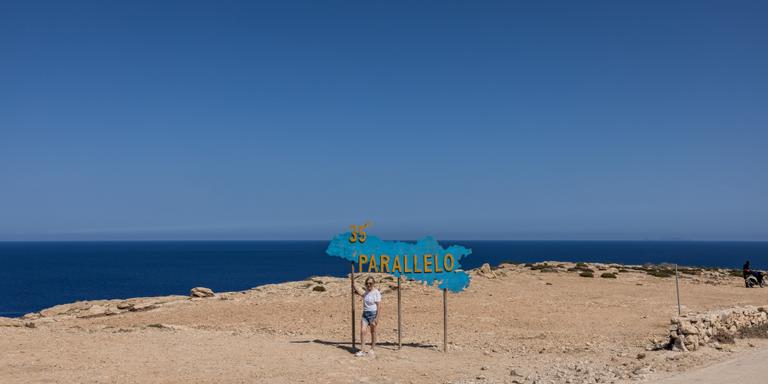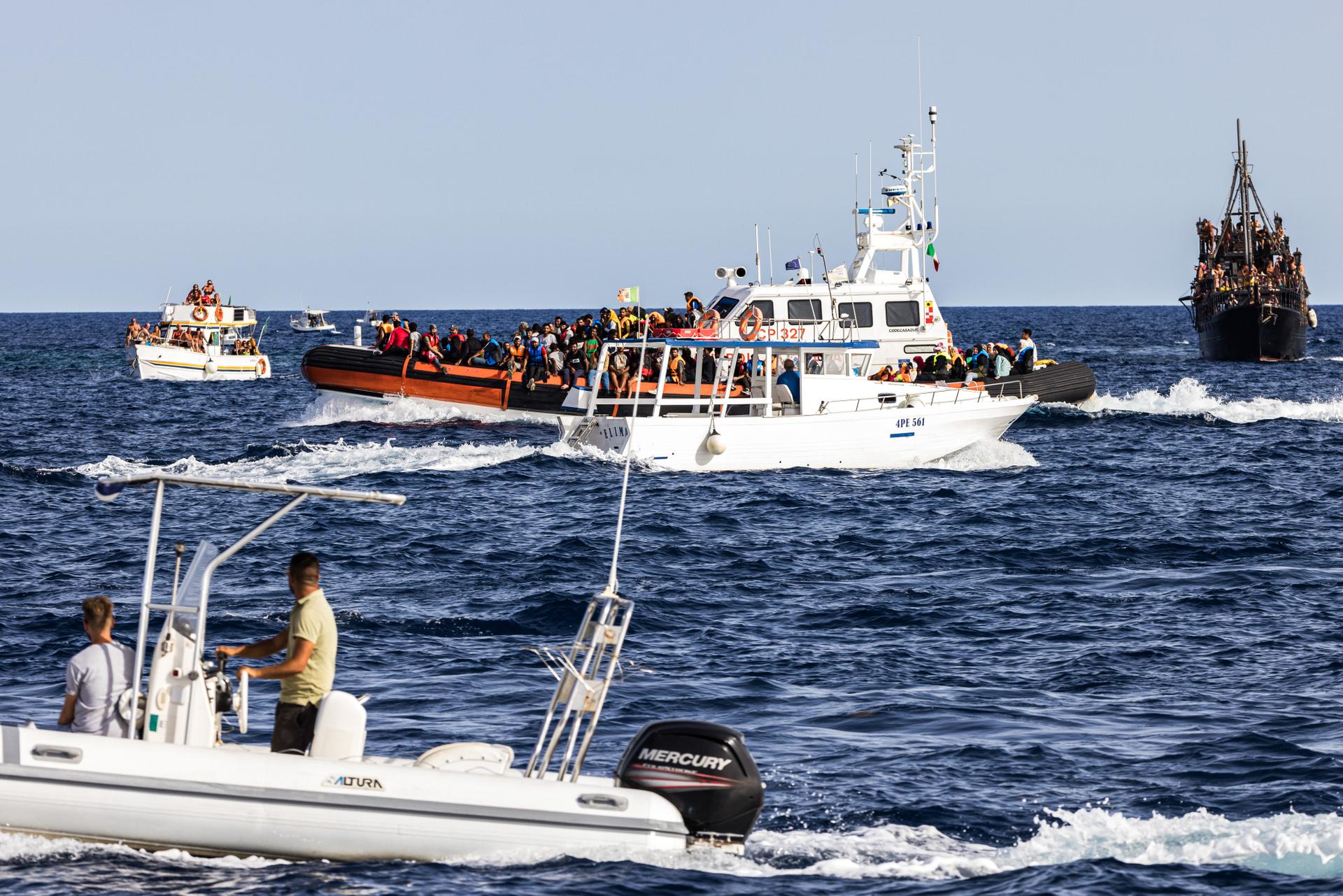


Lampedusa, at the gates of Fortress Europe
FeatureOn the borders of Europe and Africa, at the crossroads of migrants' hopes and European tensions, the Italian island's history has been punctuated by the tragedy of shipwrecks. It has been in the spotlight since the arrival of thousands of asylum seekers in mid-September.
With its stern turned away from the blue sea of late September, the Adriana returned to the port of Lampedusa. Topped by two dummy masts, the motorized replica of an imaginary pirate ship was back after the day's excursion. On the small Italian island, the tourist season was still in full swing and, in less than two hours, the ship would be taking on more holidaymakers for the evening tour, complete with aperitif, swimming under the stars and dolphin-watching. But as the toy-like boat made its way into the channel, another boat caught the attention of its swimsuit-clad passengers. Coming in from the open sea, beyond the turquoise coves, an Italian coastguard launch slowly crossed its path, carrying a compact mass of men and women, perhaps also children, whose arms, legs and life jackets could be made out. The two boats followed each other into Lampedusa harbor, dragging two parallel Mediterraneans in their wake.
The Favaloro pier, where migrants arrive after a long journey, is off-limits. No one will hear about how their personal stories collided with the outside world. This port is merely a stopping point on the way to a more distant exile. It's a milestone already reached by tens of thousands of others this year, people who left Tunisia to cross the sea to Lampedusa. In the harbor are the things they left behind: a floating graveyard of worn fishing boats, inflatable dinghies, rusting hulls made of welded metal plates, as precarious as they are numerous along the "Tunisian route," coming from the Sfax region, which is where the majority of people leave from.

Surrounded by nurses, two women from the speedboat made their way with difficulty along the quayside. Television cameras, held at a distance on the roof of a shed, were trained on them. Their faces hidden under a veil, they disappeared into a medical tent. Following four "disembarkations," according to the current terminology, on Monday, September 18, 530 people were transported from the port to the island's reception center called the "hotspot," a blind spot where exiles usually stay for a night or two, before being evacuated by plane or boat to Sicily or mainland Italy.
If there weren't so many journalists there, it would be a perfectly ordinary day in Lampedusa, where more than 60,000 migrants – mostly from sub-Saharan Africa – have transited since the beginning of June, according to figures from the Italian Red Cross. The presence of cameras testifies to the intensity of the crisis the previous week, which saw the careful logistics designed to keep Lampedusa's two realities apart briefly collapse.
You have 83.38% of this article left to read. The rest is for subscribers only.
